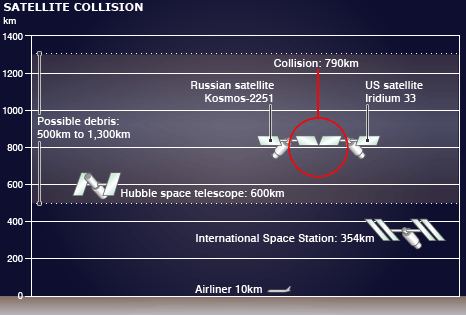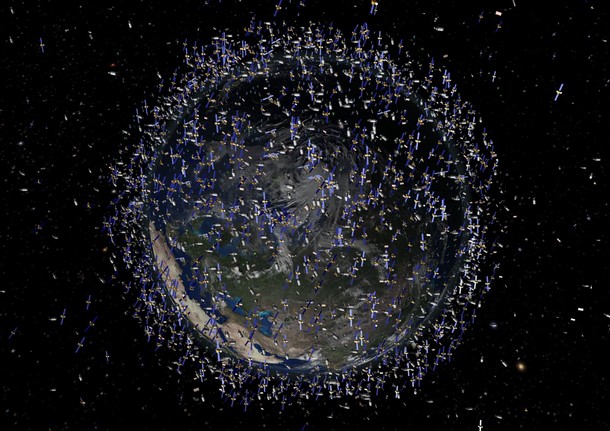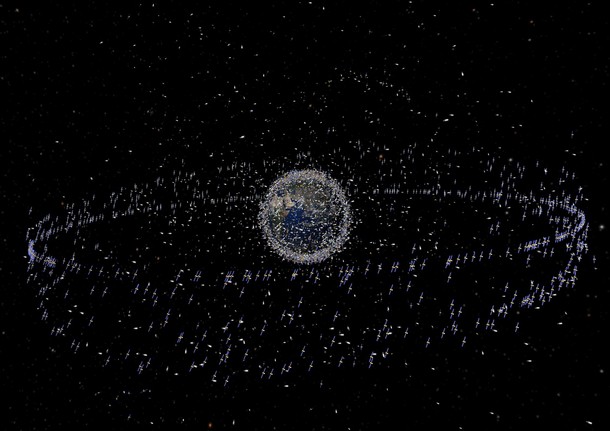
We're running out of space, in space.
It's not just on Earth that undeveloped space is shrinking. Things are beginning to get crowded in outer space too. This week, a collision between a defunct Russian communications satellite, Kosmos-2251 and one of the US commercial Iridium spacecraft has highlighted the enormous number of objects orbiting the earth, both in low Earth orbits and also at geo-stationary altitudes.
The impact between the two satellites has created a huge field of debris spread over a 800km vertical zone. While scientists have estimated that it has a very low chance of impacting with the International Space Station, or interferring with this months space shuttle mission, the presence of so much space junk could pose a risk to any future space exploration.
As this BBC news story records:
"The latest incident has produced the worst field of space debris since China destroyed a defunct Fengyun 1-C satellite with a missile in January 2007.
That incident, designed to test an anti-satellite weapon system, produced more than 2,000 separate fragments of debris."


Nasa and other space agencies are already tracking over 17,000 objects in space bigger than 10 cm. As we continue to launch more satellites, and accumulate more space junk, the risks of future collisions becomes greater.
Outer space is slowly being urbanised.
